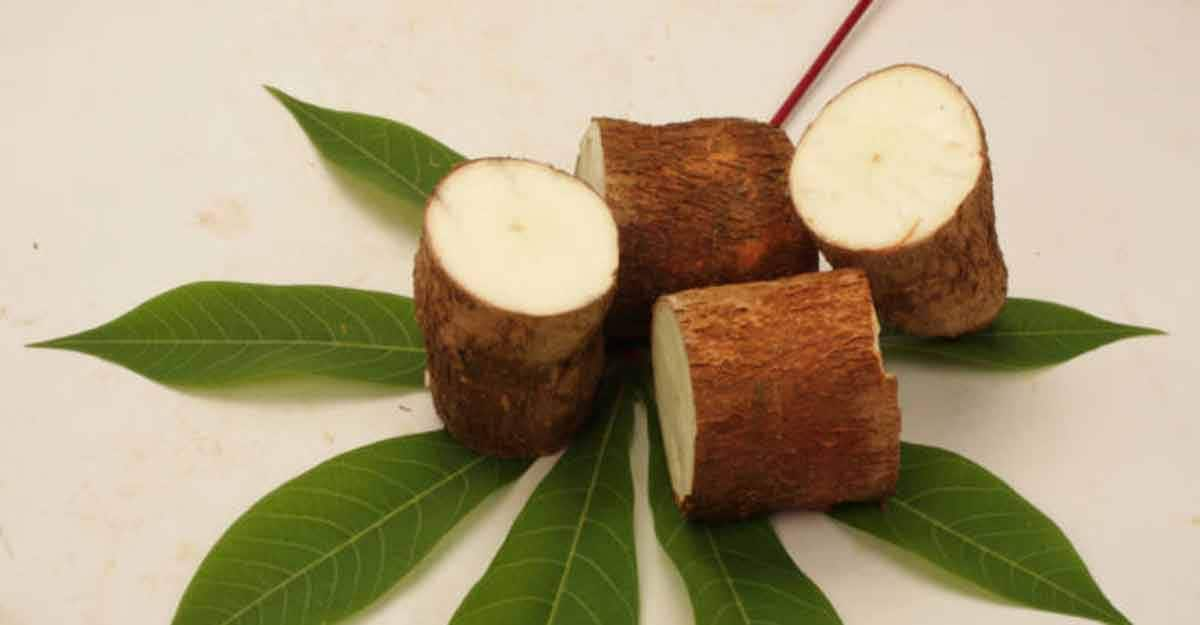Can cyanide in tapioca kill you? Here's how to safely remove it

Mail This Article
Tapioca, a Malayali staple, which is derived from the cassava root, contains naturally occurring compounds that can release cyanide. However, the presence of cyanide depends on the type of cassava and the preparation methods used.
Cassava contains cyanogenic glycosides, specifically linamarin and lotaustralin, which can release hydrogen cyanide (HCN) when the plant is improperly processed or consumed raw.
Bitter cassava varieties contain higher levels of these compounds, whereas sweet cassava varieties have lower levels.

To make cassava (and thus tapioca) safe for consumption, the root must be peeled, soaked, and thoroughly cooked. These methods break down the cyanogenic glycosides and remove most of the cyanide content. Fermentation, drying, and grating are additional traditional methods used to reduce cyanide levels.
Can cyanide from tapioca kill someone?
In extreme cases, if cassava is not properly processed, consuming it can lead to cyanide poisoning, which can be fatal. Symptoms of cyanide poisoning include dizziness, headache, vomiting, difficulty breathing, and in severe cases, convulsions or death. Long-term consumption of inadequately processed cassava can cause chronic cyanide poisoning, leading to a condition known as konzo, which results in irreversible paralysis in severe cases.
Cyanogenic glycosides alone are relatively non-toxic However, when plant tissues containing them are crushed or chewed (as a result of enzymatic hydrolysis by beta-glucosidase following maceration of plant tissues as they are eaten), or when gut bacteria break them down, they release hydrogen cyanide, which is toxic to both humans and animals. The risk of poisoning depends on how much hydrogen cyanide the plant produces. Cyanide poisoning can be fatal if the body cannot detoxify it quickly enough. The lethal dose of hydrogen cyanide for humans is between 0.5 to 3.5 mg per kilogram of body weight, with children being more vulnerable due to their smaller size.

Sweet cassava has less than 50 mg of hydrogen cyanide per kilogram, while bitter cassava can have up to 400 mg per kilogram. Sweet cassava can usually be made safe by peeling and cooking, but bitter cassava requires more extensive processing to remove the cyanide.
How to remove cyanide from tapioca?
To remove cyanide from tapioc, proper preparation methods are crucial. Here are the key steps to remove cyanide from cassava and tapioca:
1. Peeling
Peel the cassava root thoroughly. The skin contains the highest concentration of cyanogenic compounds, so removing it is an essential first step.
2. Boiling/cooking
Boil the cassava in plenty of water until fully cooked. This is a crucial step, as heat breaks down the cyanogenic glycosides and removes remaining traces of cyanide.
Ensure that the cooking water is discarded after boiling, as it may contain cyanide.
3. Soaking
Soak the peeled cassava in water for 24 to 48 hours. This allows the cyanogenic glycosides to leach out into the water. It’s best to change the water at intervals during soaking.
For better results, soaking in warm water may accelerate the process.
4. Grating and Pressing
In some traditional methods, cassava is grated and pressed to extract the liquid containing cyanide. The grated cassava is then further processed by drying or cooking.
5. Fermentation
Fermentation is a traditional method to reduce cyanide levels. The cassava can be left to ferment in water for several days. During fermentation, beneficial bacteria help break down cyanogenic glycosides, reducing cyanide content.

6. Drying
After soaking, the cassava can be dried in the sun for several days. Drying helps evaporate any remaining cyanide in the root. Sun-drying also aids in reducing the cyanogenic compounds further.
7. Industrial processing
If purchasing cassava-based products like tapioca flour or pearls, these products typically undergo industrial processing, which includes peeling, soaking, boiling, drying, and other methods to remove cyanide.



